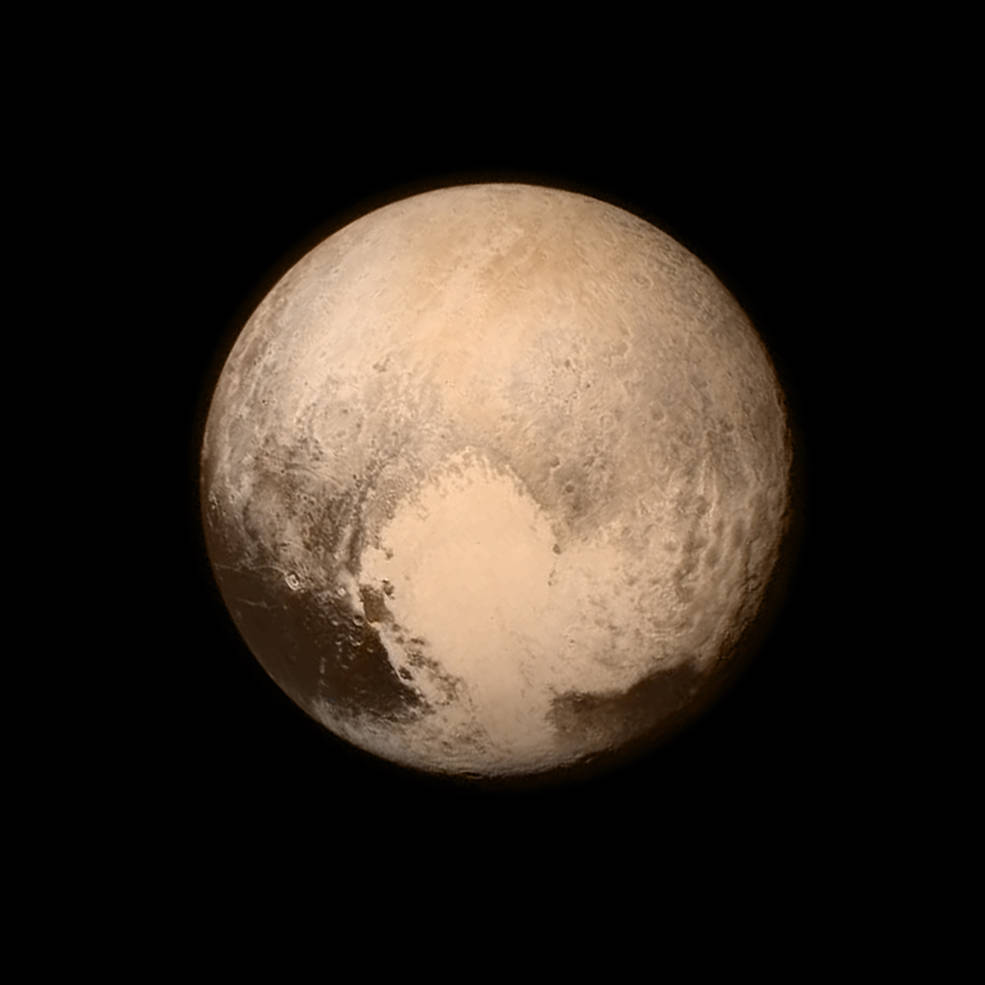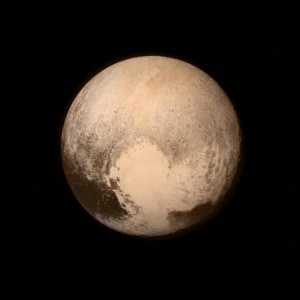
 The nitrogen ice glaciers on Pluto appear to carry an intriguing cargo: numerous, isolated hills that may be fragments of water ice from Pluto’s surrounding uplands. These hills individually measure one to several miles across, according to images and data from NASA’s New Horizons mission.
The nitrogen ice glaciers on Pluto appear to carry an intriguing cargo: numerous, isolated hills that may be fragments of water ice from Pluto’s surrounding uplands. These hills individually measure one to several miles across, according to images and data from NASA’s New Horizons mission.
The hills, which are in the vast ice plain informally named Sputnik Planum within Pluto’s “heart,” are likely miniature versions of the larger, jumbled mountains on Sputnik Planum’s western border. They are yet another example of Pluto’s fascinating and abundant geological activity.
Because water ice is less dense than nitrogen-dominated ice, scientists believe these water ice hills are floating in a sea of frozen nitrogen and move over time like icebergs in Earth’s Arctic Ocean. The hills are likely fragments of the rugged uplands that have broken away and are being carried by the nitrogen glaciers into Sputnik Planum. “Chains” of the drifting hills are formed along the flow paths of the glaciers. When the hills enter the cellular terrain of central Sputnik Planum, they become subject to the convective motions of the nitrogen ice, and are pushed to the edges of the cells, where the hills cluster in groups reaching up to 12 miles across.
At the northern end of the image, the feature informally named Challenger Colles—honoring the crew of the lost space shuttle Challenger—appears to be an especially large accumulation of these hills, measuring 37 by 22 miles. This feature is located near the boundary with the uplands, away from the cellular terrain, and may represent a location where hills have been “beached” due to the nitrogen ice being especially shallow.
The image shows the inset in context next to a larger view that covers most of Pluto’s encounter hemisphere. The inset was obtained by New Horizons’ Multispectral Visible Imaging Camera (MVIC) instrument. North is up; illumination is from the top-left of the image. The image resolution is about 1050 feet per pixel. The image measures a little over 300 miles long and about 210 miles wide. It was obtained at a range of approximately 9,950 miles from Pluto, about 12 minutes before New Horizons’ closest approach to Pluto on July 14, 2015.
A VALENTINE FOR CLYDE TOMBAUGH. Pluto’s light-colored heart-shaped region, estimated to be 1000 miles across, was one of the most prominent features seen when New Horizons began sending close-ups of the planet. From three billion miles away, Pluto had sent a “love note” back to Earth. Launched on January 19, 2006, the spacecraft had traveled nearly a decade to receive its summer valentine.
Pluto was discovered in 1930 by a young amateur astronomer, Clyde Tombaugh (1906 – 1997), a farm boy without college education who had taken a job as assistant at the Lowell Observatory in Flagstaff, Arizona. It was the first object to be found in what would later be identified as the Kuiper belt. At the time of its discovery, Pluto was considered to be the Solar System’s ninth planet, but it was reclassified in 2006 by the International Astronomical Union (IAU)—which has the responsibility for naming astronomical bodies—as a “dwarf planet.”
Tombaugh spent much of his later life in New Mexico, where—after the IAU’s decision to downgrade Pluto to a dwarf planet—the State Legislature honored him with a proclamation stating that “in New Mexico, Pluto will always be known as a planet.”
You can contact Bob Eklund at: [email protected].


Be the first to comment